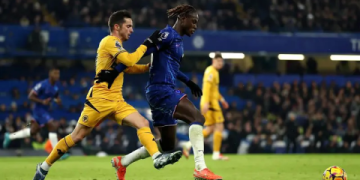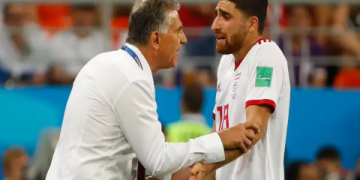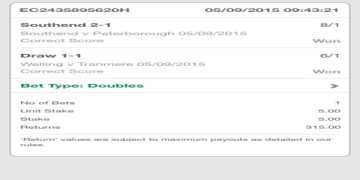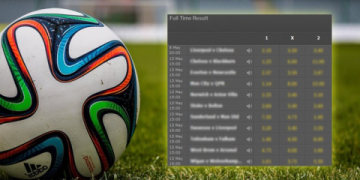# Introduction
In today’s digital world, football PR is much more than issuing press releases. It’s about storytelling, crisis management, fan engagement, and protecting a club’s image globally. With the football world under constant media scrutiny, your PR strategies can make or break your brand.
# What Is Football PR and Why Does It Matter?
Football PR, or football public relations, refers to all actions that shape the perception of football teams, players, and organizations in the eyes of the public and media. This includes managing media relations, social media narratives, and crisis communication.
Here’s the thing—football PR isn’t just damage control. A strong football PR campaign builds excitement, trust, and loyalty that lasts beyond ninety minutes on the field. Whether you’re a club, agency, or even a grassroots team, mastering football PR is non-negotiable if you want to thrive in a reputation-driven era.
Recent studies show that 68% of sports fans cite a club’s public image as a key factor in their loyalty (Source: Nielsen Sports, 2023). So, neglecting PR means risking your most valuable asset: supporter trust.
# The Core Functions of Football PR
Football PR covers a remarkable range of tasks. Let’s break down the most critical functions:
MEDIA RELATIONS: Football PR teams act as the bridge between clubs and journalists. They coordinate press conferences, craft statements, and manage requests for interviews.
CRISIS MANAGEMENT: When scandals, poor results, or conflicts arise, football PR professionals step in to handle negative coverage and steer the conversation.

BRAND STORYTELLING: A big part of football PR is sharing positive news, community outreach, transfer stories, and highlighting player journeys.
SOCIAL MEDIA MANAGEMENT: Official accounts play a huge role in communicating directly with fans and shaping narratives.
PARTNERSHIP & SPONSOR RELATIONS: Football PR ensures that sponsors and partners are positively showcased, which directly impacts commercial revenue.
Interestingly, clubs that invest proactively in PR see 30% higher fan engagement on digital platforms (Source: SportsPro Media, 2023).
# Football PR Tools: Classic Tactics vs. Modern Solutions
PR tools have evolved. Here’s a direct look at traditional versus modern approaches in football PR.
| Type | Classic Football PR Tools | Modern Football PR Solutions |
|---|---|---|
| Media Channels | Press releases, press conferences, televised interviews | Social media, influencer partnerships, podcasts |
| Fan Engagement | Official newsletters, live events | Interactive apps, real-time Q&A sessions, user-generated content |
| Crisis Control | Reactive statements, off-record briefings | Online reputation monitoring, proactive content creation |
In practice, combining old-school outreach with digital activism gives you a well-rounded football PR playbook.
# Setting Up Your Football PR Strategy: A Step-by-Step Guide
Successfully managing football PR requires a systematic approach. Below is a proven roadmap my team uses when onboarding new football clients.
1. GOAL DEFINITION: Clarify what you want to achieve–is it fan growth, damage control, brand awareness, or partner satisfaction?
2. AUDIENCE RESEARCH: Deep-dive into your fanbase, stakeholders, and media outlets. Tailor your communications accordingly.
3. MEDIA TRAINING: Prepare spokespeople with realistic scenarios, crisis protocols, and messaging. This prevents blunders in the spotlight.
4. CHANNEL SELECTION: Decide which platforms serve your audience best–Instagram for youth, newsletters for club veterans, etc.
5. CONTENT PLANNING: Fill your calendar with must-share milestones, behind-the-scenes insights, and key event promos. Review and optimize monthly.
Depending on your club size, tools like Meltwater or Brandwatch can automate media monitoring and sentiment analysis, making the process smoother.
# Common Pitfalls in Football PR: Stay Alert!
PR mistakes can spiral quickly in football. Don’t underestimate the consequences of:
ASSUMING SILENCE WORKS: Ignoring rumors or controversies only fuels gossip.
INCONSISTENT MESSAGING: Conflicting statements from different officials confuse fans and reporters.
NEGLECTING CRISIS PREP: No club is immune. Without scripts and a playbook, responses become clumsy and emotional.
OVERPROMISING: Building hype is fine, but broken promises (like signings that fall through) damage credibility.
UNDERESTIMATING SOCIAL MEDIA: One ill-judged tweet can undo months of reputation-building.
Remember—rebuilding trust takes far longer than maintaining it.
# Real-World Case: How Clubs Turned PR Around
Let’s talk about a practical example. Several years ago, a Premier League club faced a crisis after a major transfer saga backfired. The immediate online backlash was fierce, and sponsor confidence dropped. According to my experience working in football communications, quick and transparent action is everything.
What worked? The club issued a formal apology, shared context on the miscommunication, set up a live Q&A with fans, and highlighted upcoming improvements. Within days, sentiment scores began trending positive again, and sponsors praised the proactive approach.
This underlines why every football PR strategy needs adaptability, honesty, and community focus at its core.
# Advanced Football PR: Measuring Success
How do you know if your football PR efforts are paying off? Here are the key metrics to track:
MEDIA COVERAGE QUALITY: Are stories neutral, negative, or positive? Are you getting featured in reputable outlets?
FAN SENTIMENT: Monitor reactions across social, forums, and review platforms.
ENGAGEMENT RATES: Comments, shares, attendance at digital/live events.
PARTNER & SPONSOR FEEDBACK: Regular check-ins for impressions and satisfaction.
CRISIS RESPONSE TIME: The faster you neutralize a problem, the better for reputation management.
By setting KPIs and reviewing regularly, football PR becomes a powerful growth engine, not just a safety net.
# NOTICE: Don’t Fall For These Myths!
Thinking that only big-name clubs need PR? WRONG. Every club, no matter its size, benefits from nurturing its reputation.
Another myth—press coverage is always good coverage. In today’s viral climate, negative news can be devastating and long-lasting.
Finally, never assume that PR stops once the final whistle blows. Football PR is a year-round commitment.
# The Ultimate Football PR Action Checklist
Define your football PR goals clearly.
Identify and segment your target audiences.
Train key spokespeople for all scenarios.
Develop a flexible, multi-channel content calendar.
Monitor media and social sentiment daily.
Establish rapid crisis response protocols.
Review and optimize PR outcomes monthly.
Build strong relationships with media and influencers.
Nailing football PR helps your club stand out, earn loyalty, and weather any storm. It’s your ticket to lasting football success.
























